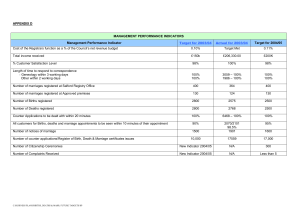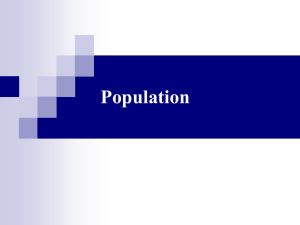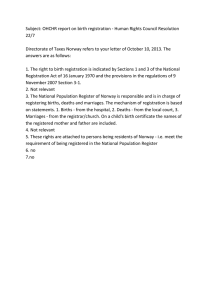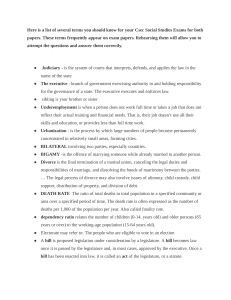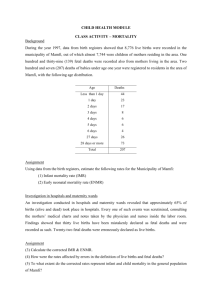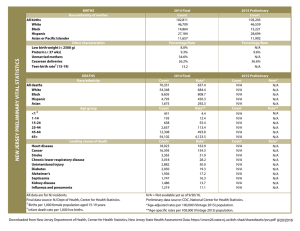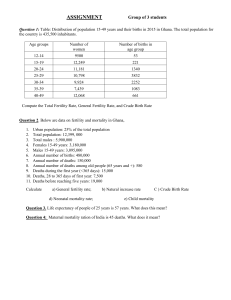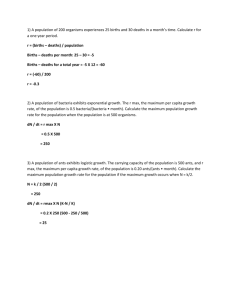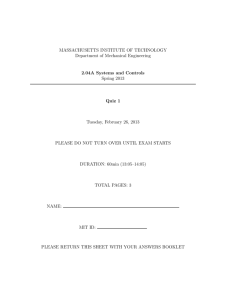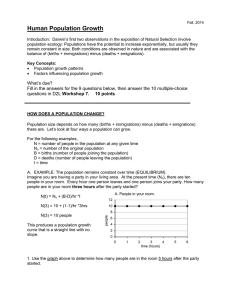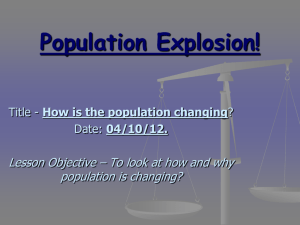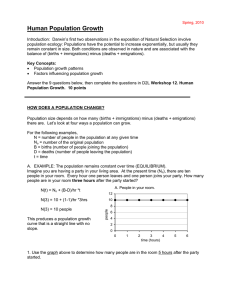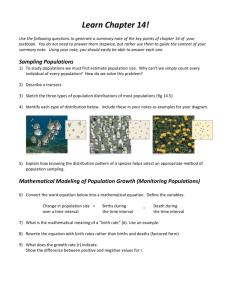2.3 The Algebra of Functions
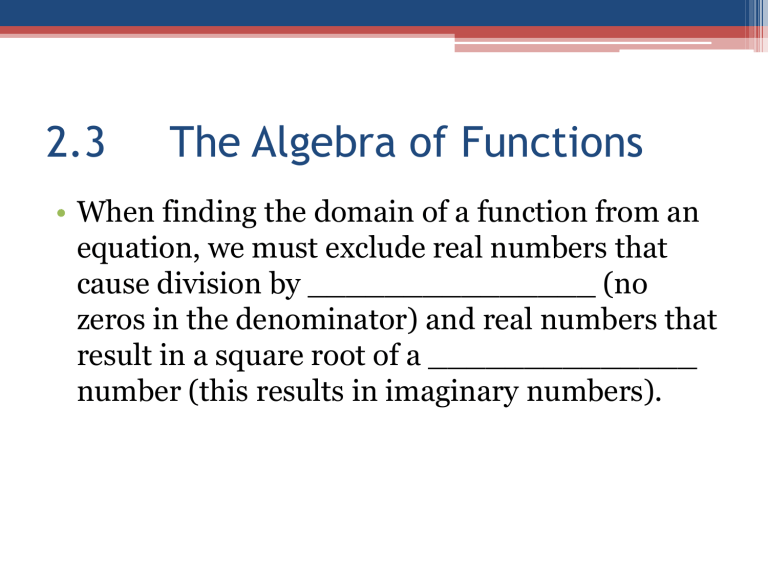
2.3 The Algebra of Functions
• When finding the domain of a function from an equation, we must exclude real numbers that cause division by _______________ (no zeros in the denominator) and real numbers that result in a square root of a ______________ number (this results in imaginary numbers).
Example 1:
• Find the domain of each function:
▫ A) f(x) = ½ x + 3
▫ B) g(x) = 7x + 4 x + 5
• We can add (find the _______________), subtract (find the _______________), multiply (find the _______________), and divide (find the _______________) functions.
• Remember when we divide functions, the denominator cannot be 0!
Example 2:
• Let f(x) = 3x 2 + 4x – 1 and g(x) = 2x + 7.
Find each of the following:
▫ A) (f + g)(x)
▫ B) (f + g)(4)
Example 3:
• Let f(x) = 5 and g(x) = 7 .
x x – 8
Find each of the following:
A) (f – g)(x)
Example 3 continued . . .
▫ B) the domain of f – g.
Example 4:
• Let f(x) = x 2 – 2x and g(x) = x + 3. Find each of the following:
▫ A) (f + g)(5)
▫ B) (f – g)(x) and (f – g)(-1)
Example 4 continued . . .
▫ C) (f/g)(x) and (f/g)(7)
▫ D) (fg)(-4)
Example 5:
• Birth model: B(x) = 7.4x
2 – 15x + 4046
• Death model: D(x) = -3.5x
2 + 20x + 2405
▫ A) Write a function that models the total number of births and deaths in the United States for each year from 2000 through 2005.
Example 5 continued . . .
▫ B) Use the function from part(a) to find the total number of births and deaths in the United States in 2005.
▫ C) Does the result in part(b) overestimate or underestimate the actual number of total births and deaths in 2005 obtained from the data in
Figure 2.15 on page 117? By how much?
Homework:
• Pages 122-124
1 – 61 every other odd
16 total




